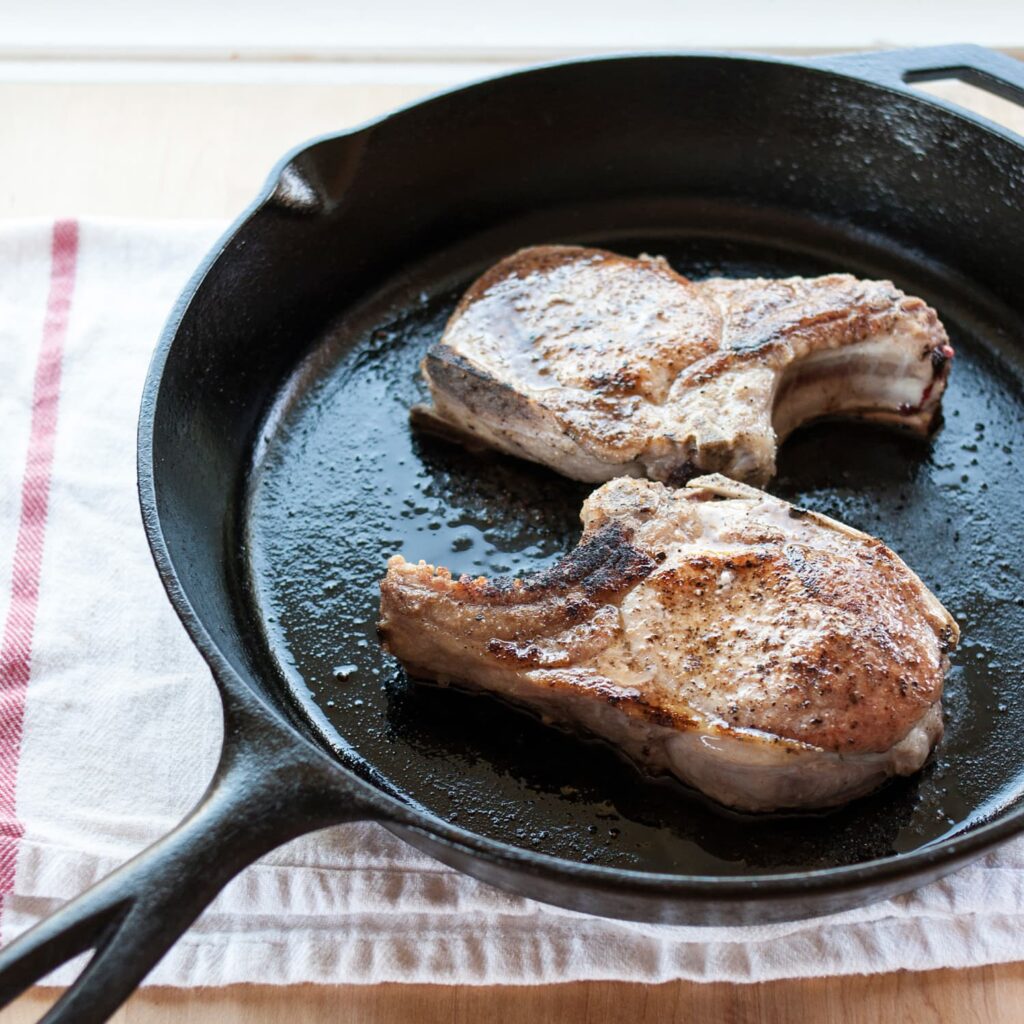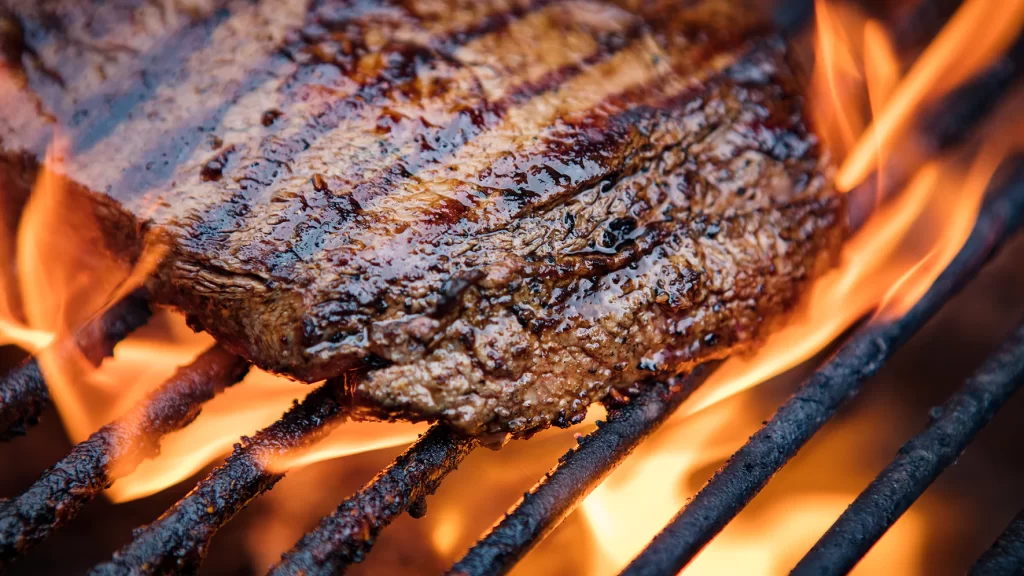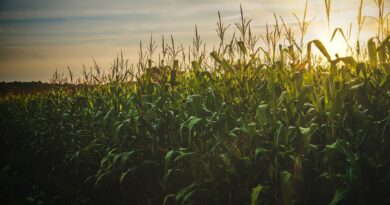Correct cooking method for different cuts of meat
The correct cooking method for different cuts of meat is important to ensure the best appearance, flavour and taste. Cooking methods are divided into two main categories.
1. Moist-heat cooking is stewing, braising, pot-roasting, casseroling, cooking bag, aluminium foil and boiling. This is perfect for less tender cuts as the slower cooking will result in juicy, tasty meat.
2.Dry-heat cooking is oven roasting, oven grilling, pan grilling, grilling over coals, shallow- or deep fat frying and stir-fry. These should only be used with tender cuts of meat.
It is important to select the correct cooking method for the correct cut.
A special section below contains hints for the South African Braai (or barbecue)
MOIST-HEAT COOKING
Mostly used for cuts that contain a large proportion of white connective tissue. The meat is tenderised by the long, slow cooking and kept juicy by moisture from the steam or added liquid. Always brown meat beforehand for improved appearance and flavour. It also seals the outer layer and reduces the loss of meat juices.
Recommended cuts: Hump, Neck, Shin, Bolo, Chuck, Flat rib, Brisket, Thin flank, Topside, Silverside, Thick flank, Aitchbone.
Basic steps for moist-heat cooking are:
STEWING (Cubes 2,5 cm, slices 1,5 cm or strips)
• Brown the beef in heated oil. Fry onion, garlic or curry before adding liquid.
• Add heated liquid.
• Simmer slowly with a tight-fitting lid, over low heat, until the meat is tender and cooked. Vegetables can be added during the last 30 minutes.
BRAISING (Slices 1,5 cm)
• Brown meat in heated oil.
• Spoon the meat onto a layer of sautéed vegetables.
• Add heated liquid.
• Simmer with a tight-fitting lid, over low heat, until the meat is tender and cooked.

POT-ROASTING (Whole cut 1,5 kg or more)
• Tie the meat with string to retain its shape if necessary.
• Brown the meat in heated cooking oil.
• Add heated liquid and simmer with a tight-fitting lid over low heat until the meat is tender and cooked. Vegetables can be added during the last 30 minutes.
CASSEROLING (Cubes, slices or whole cut 1,5 kg or more)
• Brown the meat in heated cooking oil.
• Add heated liquid.
• Place the meat in an oven dish with lid and bake in a preheated oven at 160 °C for 30 – 35 minutes per 500 g plus an additional 30 minutes.
COOKING BAG (A whole cut of 1,5 kg or more)
• Mix the seasoning and rub it into the meat and place in cooking bag.
• Tie the bag and use a fork to pierce a hole in the top to allow excess steam to escape. Bake in a preheated oven at 160 °C for 30 – 35 minutes per 500g plus an additional 30 minutes.
ALUMINIUM FOIL (A whole cut of 1,5 kg or more)
• Rub the seasoning into the meat.
• Place the meat on the shiny side of the foil and wrap securely but not too tightly.
• Bake in a preheated oven at 160 °C for 30 – 35 minutes per 500 g plus an additional 30 minutes.
• Open the foil for the last 30 minutes to allow the meat to brown.
BOILING (For pickled meat and meat stock)
• Cover the meat or bones with cold water.
• Add bay leaves, cloves, peppercorns, celery, carrots, onion and a bouquet garni for flavour.
• Bring it to the boil and simmer slowly, until cooked. Add more boiling water if necessary.
DRY-HEAT COOKING
Meat is cooked by means of direct exposure to heat or the circulation of hot air. No additional liquid is added.
Recommended for tender, matured cuts. Rare or medium done is advisable, well-done meat tends to be dry and tasteless.
Recommended cuts: Prime rib, Wing rib, Sirloin, Rump
Basic steps for dry-heat cooking are:
OVEN ROASTING (A whole cut of 1,5 kg or more)
• Place the meat, uncovered, with the fat side uppermost on the rack of an oven-roasting pan.
• Timings for roasting in a preheated oven at 160 °C: (Cook from room temperature)
Rare: 15 – 20 minutes per 500 g plus an additional 15 minutes. (Internal temperature of 60 °C)
Medium done: 20 – 25 minutes per 500 g plus an additional 20 minutes. (internal temperature of 65 °C)
Well done: 25 – 30 minutes per 500 g plus an additional 25 minutes. (internal temperature of 70 °C)
The extra time makes allowance for temperature variation since the oven heat does
not remain constant.
• Allow the meat to rest in the warming drawer for 10 minutes to facilitate carving and for re-absorption of the meat juices.
GRILLING (Steak, sausage, kebabs and sosaties)
• Slash the fat edges at 25-mm intervals to prevent curling during grilling.
• Oven grilling: Preheat the top oven element until red hot. Place the meat, uncovered, on the rack of an oven-roasting pan. Grill the meat 10 cm below the element of oven, as follows:
Rare: 5 – 7 minutes in total.
Medium-done: 7 – 10 minutes in total.
Well done: 10 – 12 minutes in total.
Keep the oven door 10 cm ajar to allow the steam to escape.
PAN GRILLING:
Preheat a riffle pan without fat or oil until smoking hot. Place the meat in the pan. Do not pull the meat away from the pan since this damages the meat fibres and causes loss of meat juices. Grill the steaks for the same time as for oven grilling, until they come loose of their own accord.
Sausage is placed on the stove in a cold riffle pan. Set the heat at medium until the sausage begins to hiss and then turn the heat down to low.
GRILLING OVER THE COALS: (BRAAI)
The meat is grilled over moderate coals for the same time as for oven grilling. Grill 10 cm above moderate coals.
FRYING (Thin slices or leftover meat)
• Heat oil 3 mm deep for shallow-fat frying and 10 cm deep for deep fat frying.
• Protect the meat with batter or an egg and crumb coating.
• Fry the meat until golden brown, then place it on kitchen paper to absorb excess oil.
STIR-FRY (Thin strips of meat)
• Heat a small quantity of oil.
• Rapidly brown the meat in oil.
• Add the prepared vegetables, with the vegetables that cook quickest added last.
• Add a small quantity of liquid and simmer without a lid for approximately 2 minutes.

BRAAI (BARBEQUE)
FIREWOOD AND COALS
Charcoal is very popular but any wood that produces long-lasting coals is suitable.
Rooikrans, Camelthorn, Umbrella-thorn, Sickle-bush, even vine stumps are ideal.
Use fire lighters, but never petrol to light a fire.
HINTS WHEN BRAAING
• Beef must be thawed before it is grilled. Remove the meat from the freezer at least a day before use and leave it to thaw in the refrigerator in its wrapping.
• Meat should be taken from the fridge at least 30 minutes before grilling.
• If preferred, brush either the meat or the grill with a little cooking oil to prevent the meat from sticking to the grill.
• Beef cut 2 cm in thick should be placed about 10 cm from the coals.
• Grill steaks as quickly as possible without scorching the meat. Sausages, kebabs and sosaties on the other hand, have to be grilled slowly.
• Grill steaks on one side until brown and loose on grid, turn and finish grilling.
• Do not use a fork or sharp object to turn the meat since it causes loss of meat juices. Rather use meat tongs.
• Cook meat in the correct order, for example steaks should be cooked last, since they toughen if not served immediately.
• Sausages can be kept warm successfully and can be cooked first. Remember to reduce the cooking time of meat that is to be kept warm.
• Spices and herbs should be used sparingly so as not to overwhelm the flavour.
• Sprinkle with salt just before serving – if salted too early it draws out the juices, resulting in dry and tough meat. Serve immediately otherwise it becomes tough.
(BEEFTALK SA)



